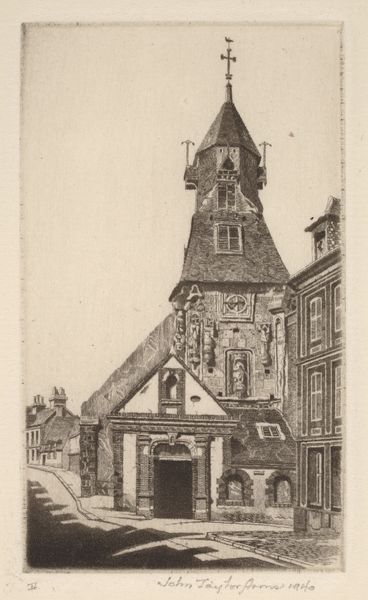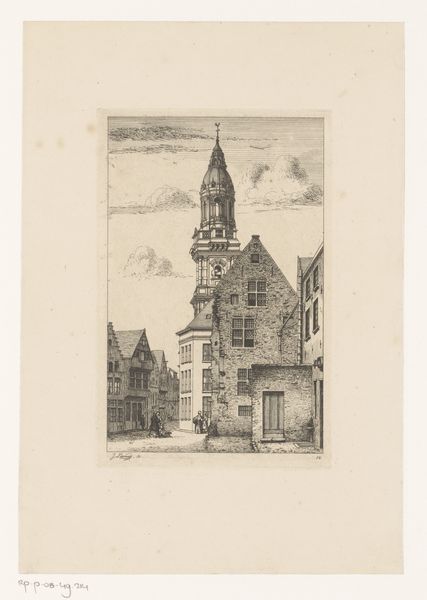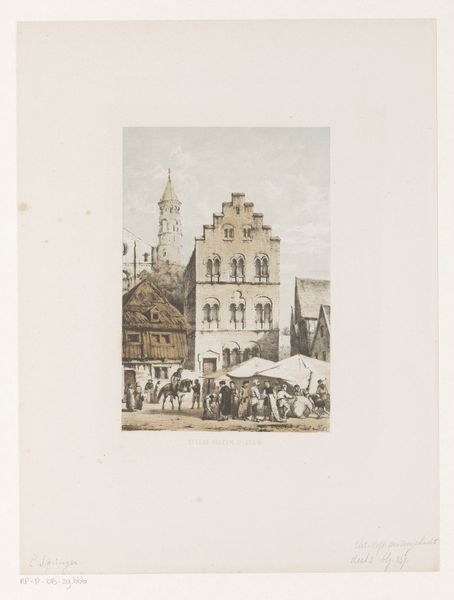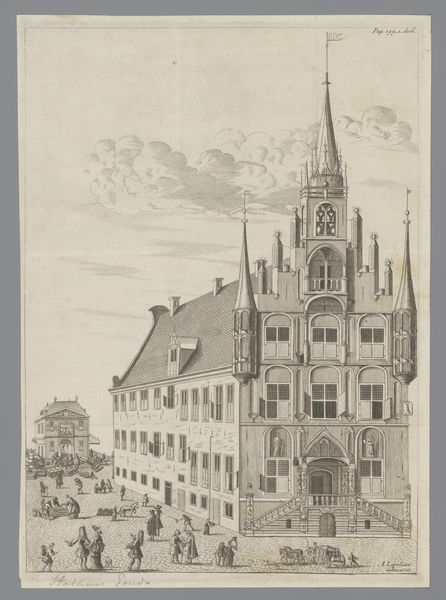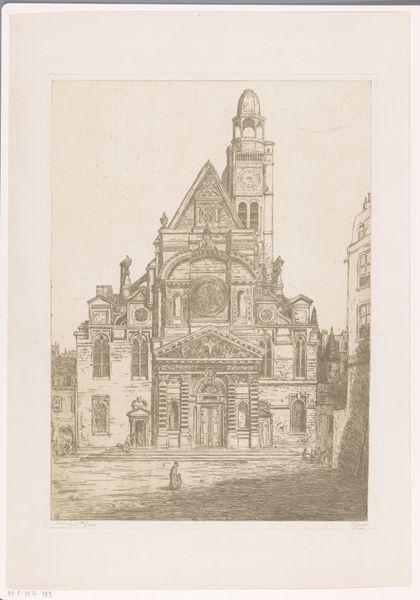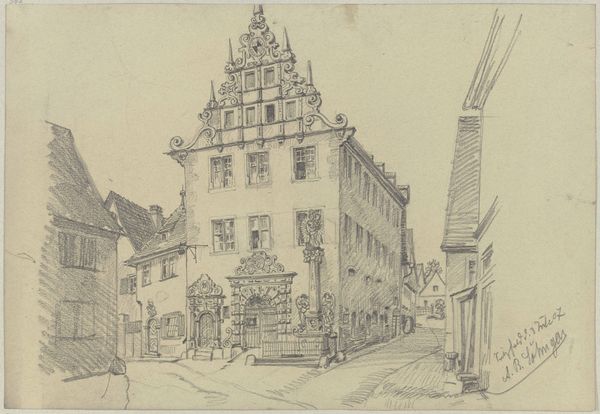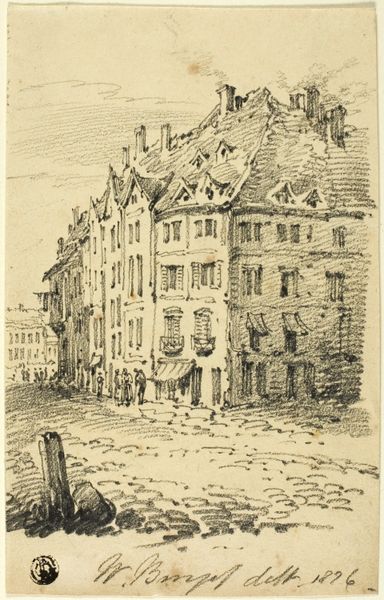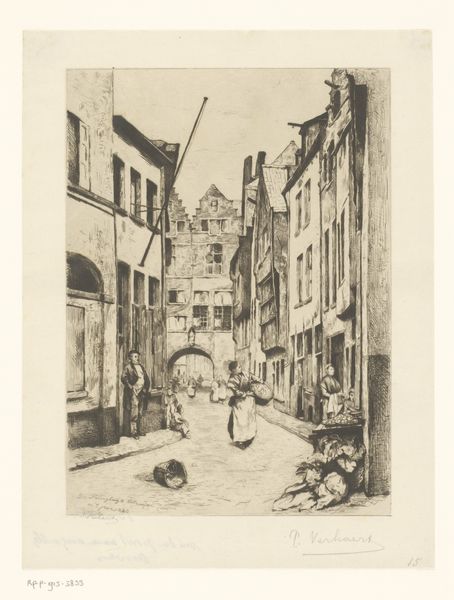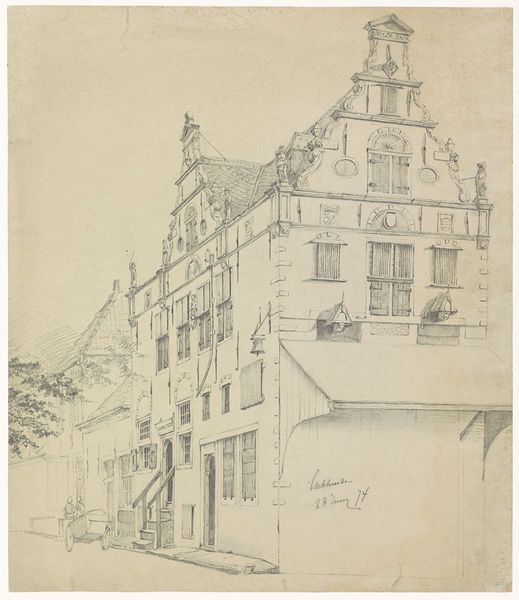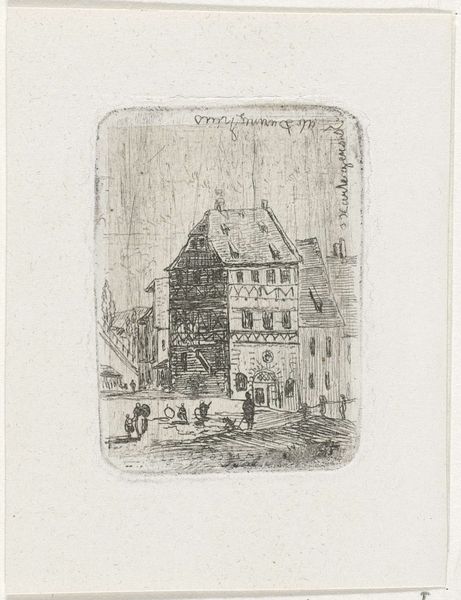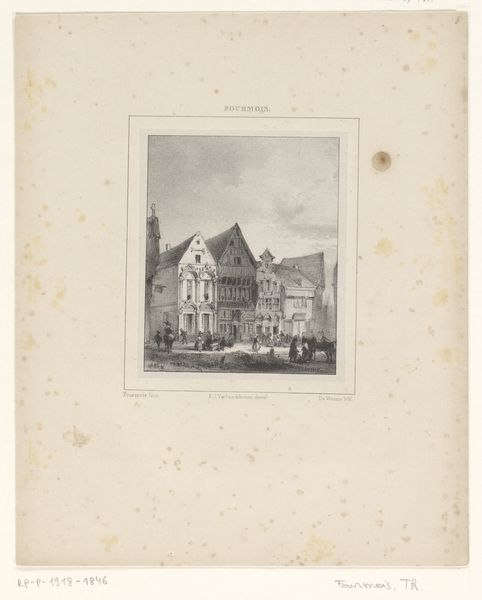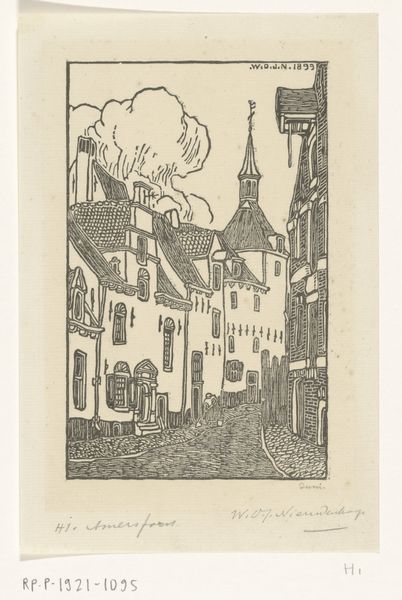
drawing, paper, ink
#
drawing
#
paper
#
ink
#
cityscape
#
genre-painting
#
history-painting
#
realism
Dimensions: height 273 mm, width 199 mm
Copyright: Rijks Museum: Open Domain
Curator: Before us is Cornelis Springer's "Twelfth-Century Houses," created before 1861. The medium is ink on paper. It's currently held in the Rijksmuseum. Editor: My immediate thought is that it is an evocative urban tableau; the buildings are so meticulously rendered, and yet there's a liveliness in the depiction of the people, bringing the scene to life. Curator: Indeed. Springer was very interested in accurately documenting architectural history. Drawings such as this often served as studies for larger history paintings or were sold as individual picturesque views, meeting the burgeoning interest in historic preservation in the 19th century. It makes you wonder about his patron base. Editor: Given Springer's reputation, it’s clear his patrons valued both precision and romanticism. Look closely at the ink work, how it uses layering to create the texture of old stone alongside that thatch roof. This kind of technical mastery elevated what could be considered simply an illustration into a work prized for its own aesthetic merit. I would assume this took quite some time to produce. Curator: Exactly. Springer wasn’t just recording buildings; he was reconstructing a social world, wasn't he? Think about what's included: figures bartering beneath market stalls, religious structures in the background, civic structures at the fore. He uses architecture as a way into historical narrative and allows us to interpret the significance of the depicted town. It evokes a deep understanding of how society operated at that time, or rather, how people imagined society at that time. Editor: I am more concerned with the social setting he illustrates here; those tents erected just outside these massive buildings give a sense of the intersection of commerce and class. Considering that paper was becoming increasingly available in the 19th century, this ink-on-paper medium is crucial; Springer tapped into a wider market keen to own a piece of this historical "reality". What this scene represents shifts when we factor in what that mass production afforded him and, by extension, the public. Curator: An excellent point. The interplay between history and its reproduction for the modern viewer highlights how art is not just reflective but also actively shapes the way history is consumed and understood. It would also change his position in the art market. Editor: Absolutely. A detailed work such as this really forces you to see beyond just a pretty picture. This attention to historical details rendered in a tangible medium invites a deep consideration of its societal value. Curator: Agreed, a worthwhile discussion that provides greater insight. Editor: Precisely, prompting new reflections.
Comments
No comments
Be the first to comment and join the conversation on the ultimate creative platform.
